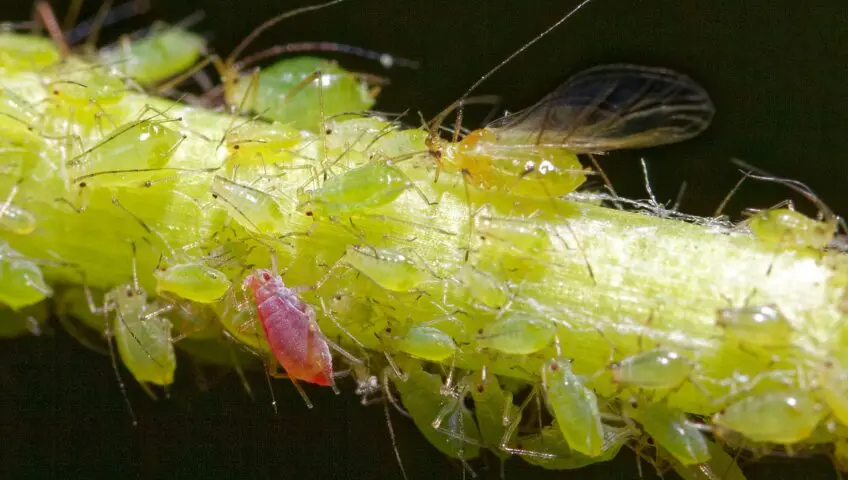You might think that creatures as tiny as aphids couldn’t take down your magnificent, green shrubs. But this pest can ruin even the healthiest ornamentals. Make sure you take aphids seriously when planning your outdoor pest control strategies, or your lawn could suffer.
What is an aphid?
Aphids are very small, soft-bodied insects. You might have trouble seeing them, but they survive and thrive in just about every U.S. zone. They can appear alone or in small groups to feed. Aphids are prolific reproducers: A population can experience several generations in a single season.
What does it look like if I have aphids in my lawn?
Misshapen, curling, yellowing or stunted leaves are signs of aphids feeding on plant juices. Damage usually begins when the temperature is consistently between 65 and 80 degrees. In the Brevard County area, that’s much of the year.
Another telltale sign of aphid damage is a sticky substance on the plant called honeydew that builds up on the leaves. Check the undersides of the leaves; it’s their preferred hiding place.
The honeydew that aphids produce is a prized food source for other insects. Look for their predators like ladybugs, or ants that herd the aphids into their colonies to harvest the honeydew.
How can I get rid of them
One effective method is to spray them off with water. Aphids are small and can’t fly, so rinsing them off your shrubs and trees often drives them away.
Horticultural oils and DIY remedies such as soap sprays (that do not contain a degreaser) can deter a mild aphid intrusion. But these remedies require frequent re-application, because the lightest rain can rinse them away. Systemic treatments often work the best, but you’ll probably need the help of an outdoor pest control company for these.
Don’t lose your valuable and beautiful landscaping to the miniscule aphid. Call Slug-A-Bug today at (321) 259-7844 for a free evaluation.
